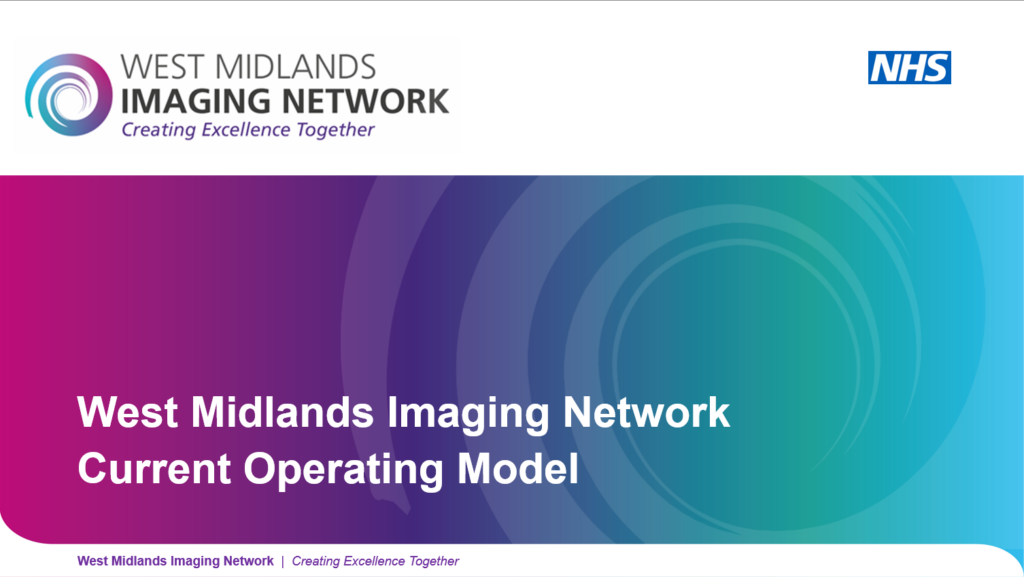Current and Target Operating Model

Home »
As the Network develops and work programmes are commenced, there has been a call to ensure we are doing the right thing at the right time. Whilst plentiful national reports and guidance exists, to drive a functioning Network, there is a need to demonstrate a clear shared vision for what we would like to achieve.
By exploring the current landscape, we will be able to identify gaps in the current Network’s vision and better define the needs of the imaging services in the West Midlands. By defining the baseline, we will have a greater understanding of how to target resources and enables the development of a target operating model owned by the members of the Network and informed by the experiences of patients, carers and referrers.
In May 2024, our Senior Quality Improvement Manager presented at the National Conference for Radiology Managers, where Holly explained the model’s intention and how they are to be developed. You can listen to a recording of the presentation on youtube
Our Current Model
This document outlines the West Midlands Imaging Network’s Current Operating Model. A Current Operating Model describes how an organisation is set up to deliver its goals via a clear structure.
A review of specific region challenges within imaging has been completed and we have found that 2 of our ICBs have the highest percentage of people living in deprivation in England. The historical need for change is highlighted clearly along with current data for workforce, patient flows, digital flows and assets. Exploring the network’s Current Operating Model has enabled us to define the issues and challenges our Trusts are experiencing as well as discover specific concerns in our region.
Our Target Model
As our work programmes develop, we need to look to the future at how our services can work together in the most productive way. The next steps will be to develop a ‘Target Operating Model’. This work aims to take information gained from this ‘Current Operating Model’, as well as the Network’s early vision, to look towards the future.
By ensuring we have evidence-based work programmes based on a clear model, defined by our members, we aim to improve engagement and build trust and by encouraging ownership by our experts. We will also be able to promote transparency by demonstrating the rationale behind all the decisions we make. This will enable us to build an evidence-based work programme which has designed and driven by our members.
While the Network develops the future operating model, the digital requirement has particular urgency and is being developed in parallel.
It is very clear, for instance that there is an urgent cross site image sharing and report sharing requirement. Delivering this would improve current operations and create a platform for a future operating model. Cross site reporting, would enable a significant shift in the ways in which Trusts work together and is expected to be formalised in the TOM.
There is more divided opinion on cross site scheduling. While many strategic leaders believe this would deliver material patient benefits and operational efficiencies, those who are currently delivering image scheduling in Trusts caution that this may create as many problems as it solves.
Therefore, the digital program has set out a prioritised functional requirements list, which will be developed with Trusts and ICBs along with the TOM.
The project objectives include:
- Build trust and increase engagement by encouraging ownership by host organisations and experts
- Provide a clear direction for the Network development
- Develop Shared vision by the member organisations
- Help shape future work programme
- Map strategies across the network
- Identify commonalities
- Promotes transparency
Inspiration has been taken from the Scottish Current and Target Operating Models, which we aim to replicate and build upon by using the layout, infographics, narrative, and video content.
